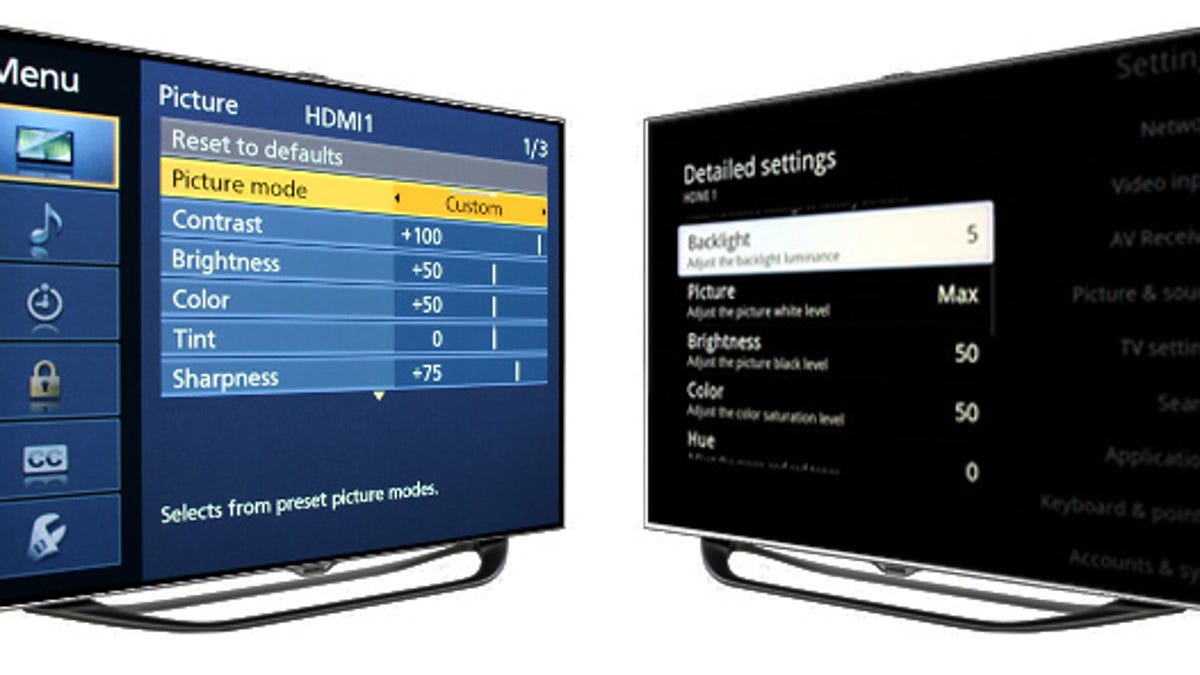You have a new TV. Now what?
Now that you've bought your shiny new TV, make sure you get the most out of it with the right settings, cables, and placement.

A new TV is a great thing. A new TV, right after it's taken out of the box, is not. To get the most out of your TV you need to adjust the settings, use the right cables, adjust your sources (like your cable box) and more.
Compiled here is a directory of everything you'll need to get your TV looking its best. Instead of one long article describing it all, it's broken down into sections so you can find just what you're looking for.
A good place to start is with the TV tech explainer: Every HDTV technology decoded. It, like this guide, cuts through the jargon and explains what all the TV tech talk really means.
Buyer's remorse? Don't worry.
Buyer's remorse is incredibly common with TV purchases, as they're a lot of money, and there are always new models coming out. However, it's rarely worth waiting for or worrying about what's coming out next year. Check out Buy a TV now or wait? to assuage your concerns.
If you bought your TV in a store, check out "Five lies your TV salesperson will tell you." It's possible you got sold some items (*cough* HDMI cables *cough*) that you don't need.
Placement
Chances are, you've got a spot already set for your TV. If you're considering mounting the TV on the wall, make sure you read How high should I put my TV? and Don't mount a TV above a fireplace. If you're flexible on placement, check out Where should I put my TV?.
And even though you already bought a TV, How big a TV should I buy? has some notes on recommended seating distances that may come in handy.
If you have kids, it's worth considering How to keep your TV from falling over.
Initial connections and settings
Curious how to set up your TV? Check out the appropriately titled "How to set up a TV?," which covers cable and source connections.
Every TV will look better if you adjust its picture settings, starting with how to pick the best picture mode preset. At the very least, you can do this by eye. A much better option is a setup disc, which will let you fine-tune every setting. If you want to go to the next level, consider getting your TV professionally calibrated.
Still not satisfied? How about "Five tips for a better HDTV picture." This catch-all article covers sources, cables, and more.
One of the biggest changes in picture quality you can make is adjusting color temperature, or the "color" of white. So what is TV color temperature, and why does it matter?
Depending on your source, it's possible certain picture controls will be grayed out. This is normal.
Are you a gamer? Most TVs have a Game mode that might improve your gaming experience.
If your eyes hurt from watching TV at night, it's probably worth adjusting your TV's backlight.
If there's weird blockiness in the image, it's probably not the TV. Check out What is the blockiness in my TV's picture?
If motion looks weird, or if everything looks like a cheesy soap opera, it's a "feature" that's actually called the "Soap Opera Effect." You can turn it off, thankfully.
Source setup (cable box, Blu-ray, etc)
Guess what? 1080i and 1080p are the same resolution.
Make sure you set your cable box correctly. Most people should set it for 1080i, but not everyone.
You should connect your new TV with HDMI cables whenever possible. Fortunately, they're really cheap. Check out the HDMI cable buying guide.
It's also possible, depending on where you live, to get free HDTV.
Maintenance
Modern TVs are very reliable. Check out "How long do TVs last" to get a general idea about lifespan.
A common rumor about plasma TVs is that you need to "break them in." This is rubbish. You don't need to break in a plasma TV. Ostensibly this is to minimize chances of "burn-in," but burn-in itself isn't the big deal some make it out to be.
Don't use Windex to clean your TV! Here's how to clean a TV screen.
Because TVs are flat and usually reflective, reflections from in-room lights and windows can be annoying. Here's how to rid your HDTV of reflections.
Troubleshooting
When you're watching some programming, it's possible you'll see a white line along the top of the screen. This isn't a malfunction of your TV, it has to do withhow the content is sent to your TV.
After a new TV watching marathon, it's possible your eyes will feel sore. Why is that, and what can you do?
If you're unsure why some things you watch look great, and others look fuzzy, blurry, or noisy, check out "When HD isn't HD."
If you're having trouble hearing the dialogue on your TV, you're not alone. It's also not necessarily your ears. The problem is that modern flat-panel TVs all have tiny speakers that sound terrible. Check out "How to amplify the dialogue from your HDTV."
Are you noticing weird blotches, especially during dark scenes? Chances are it's a uniformity issue, which is common with modern LCD TVs. Is it a serious problem?
Got a question for Geoff? First, check out all the other articles he's written on topics like HDMI cables, LED LCD vs. plasma, active versus passive 3D, and more. Still have a question? Send him an e-mail! He won't tell you what TV to buy, but he might use your letter in a future article. You can also send him a message on Twitter @TechWriterGeoff or Google+.

